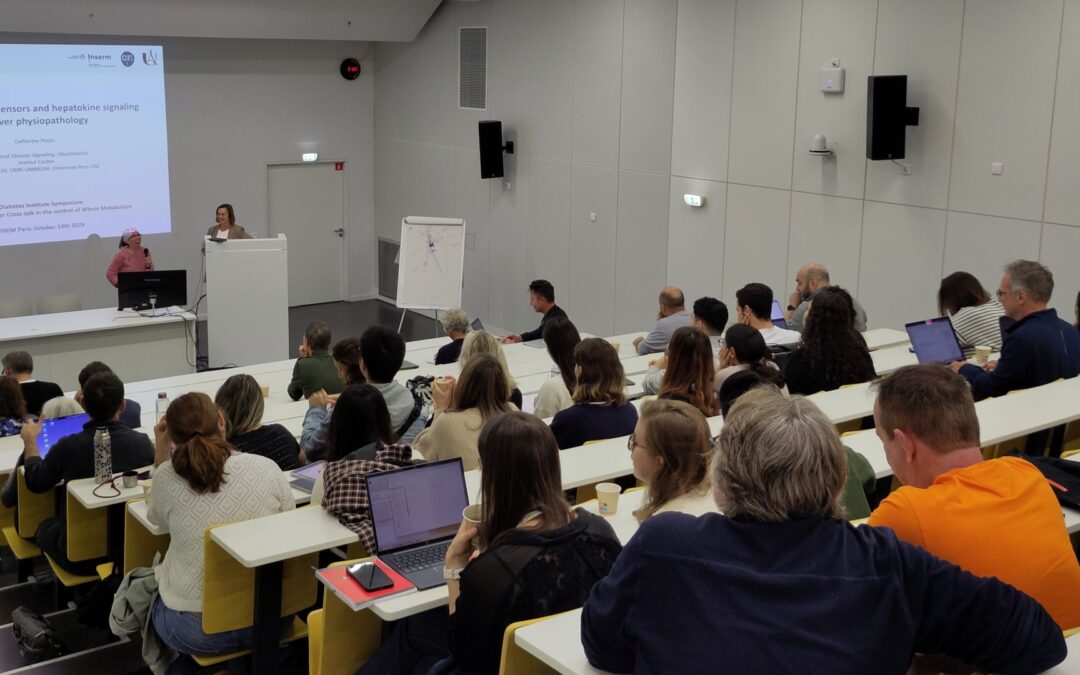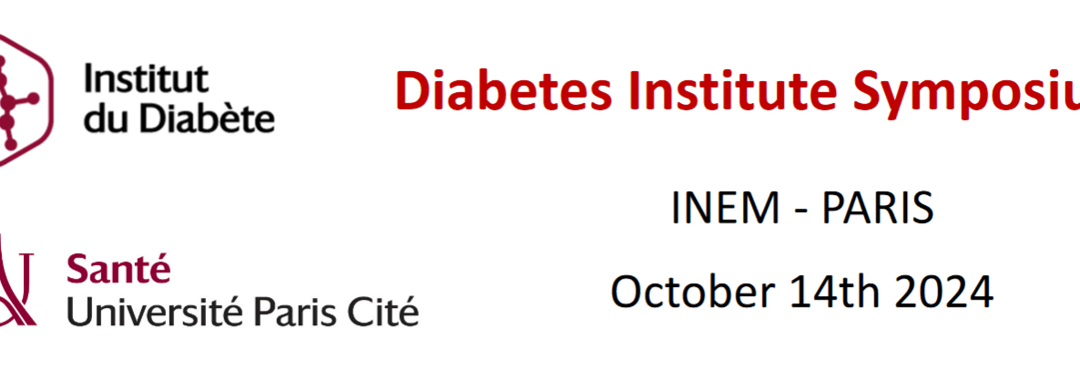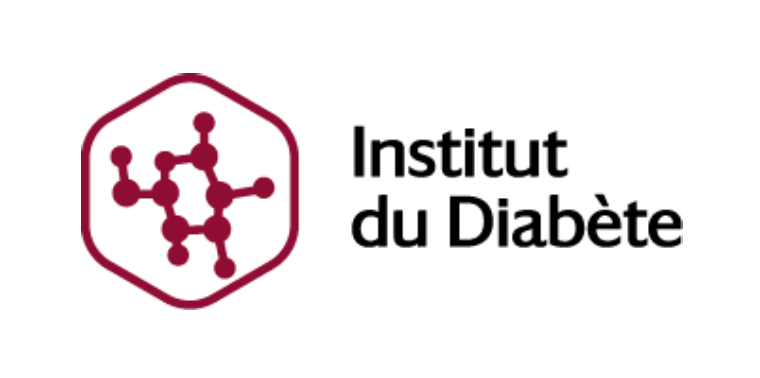Regulation of Glycemia by Central Nervous System
REGLYS stands for Regulation of Glycemia by Central Nervous System. Our team is part of the adaptive and functional biology unit (CNRS UMR 8251).

Our research specialisation is centred on studying the effect of nutriments on the nervous control of energy homeostasis (food behaviour, secretion and insulin action) in physiological and physiopathological situations
More in particular, we study:
1) how the central nervous system (CNS) receives and permanently integrates peripheral signals providing information about the organism’s energy status (jejunum, fed, etc.). The signals that we study are of circulating (leptin, ghrelin, insulin, nutriments) or nervous (vagal afferents) origin. The intestine-brain axis is also studied.
2) How the metabolic flows (production and use of glucose, lipolysis), the endocrine secretions (insulin, leptin, ghrelin, GLP1), and food behaviour adapt as a function of this information. It concerns characterisation at the molecular, cell, and integrated stage: 1) the peripheral signals (of gastrointestinal or circulatory origin) informing the CNS; 2) the functioning of the CNS neurons specialised in integrating this information and localised in specific regions (hypothalamus, cerebral trunk, hippocampus, olfactory bulb); 3) The repercussion of this integration on the peripheral parameters mentioned above (metabolic flows, food behaviour, energy expenditure, etc.). These studies are carried out in normal, diabetic, and/or obese mouse models.
Main publications
Wigger L, Cruciani-Guglielmacci C, Nicolas A, Denom J, Fernandez N, Fumeron F, Marques-Vidal P, Ktorza A, Kramer W, Schulte A, Le Stunff H, Liechti R, Xenarios I, Vollenweider P, Waeber G, Uphues I, Roussel R, Magnan C, Ibberson M, Thorens B. Plasma Dihydroceramides Are Diabetes Susceptibility Biomarker Candidates in Mice and Humans. Cell Rep. 2017 Feb 28;18(9):2269-2279.
Laperrousaz E, Moullé VS, Denis RG, Kassis N, Berland C, Colsch B, Fioramonti X, Philippe E, Lacombe A, Vanacker C, Butin N, Bruce KD, Wang H, Wang Y, Gao Y, Garcia-Caceres C, Prévot V, Tschöp MH, Eckel RH, Le Stunff H, Luquet S, Magnan C, Cruciani-Guglielmacci C. Lipoprotein lipase in hypothalamus is a key regulator of body weight gain and glucose homeostasis in mice. Diabetologia. 2017 Jul;60(7):1314-1324.
Mortreux M, Foppen E, Denis RG, Montaner M, Kassis N, Denom J, Vincent M, Fumeron F, Kujawski-Lafourcade M, Andréelli F, Balkau B, Marre M, Roussel R, Magnan C, Gurden H, Migrenne-Li S. New roles for prokineticin 2 in feeding behavior, insulin resistance and type 2 diabetes: Studies in mice and humans. Mol Metab. 2019 Nov;29:182-196.
Bravo-San Pedro JM, Sica V, Martins I, Pol J, Loos F, Maiuri MC, Durand S, Bossut N, Aprahamian F, Anagnostopoulos G, Niso-Santano M, Aranda F, Ramírez-Pardo I, Lallement J, Denom J, Boedec E, Gorwood P, Ramoz N, Clément K, Pelloux V, Rohia A, Pattou F, Raverdy V, Caiazzo R, Denis RGP, Boya P, Galluzzi L, Madeo F, Migrenne-Li S, Cruciani-Guglielmacci C, Tavernarakis N, López-Otín C, Magnan C, Kroemer G. Acyl-CoA-Binding Protein Is a Lipogenic Factor that Triggers Food Intake and Obesity. Cell Metab. 2019 Dec 3;30(6):1171.
Soleimanzad H, Montaner M, Ternier G, Lemitre M, Silvestre JS, Kassis N, Giacobini P, Magnan C, Pain F, Gurden H. Obesity in Midlife Hampers Resting and Sensory-Evoked Cerebral Blood Flow in Mice. Obesity (Silver Spring). 2020 Nov 10. doi: 10.1002/oby.23051. Epub ahead of print. PMID: 33174382.
Sánchez-Archidona AR, Cruciani-Guglielmacci C, Roujeau C, Wigger L, Lallement J, Denom J, Barovic M, Kassis N, Mehl F, Weitz J, Distler M, Klose C, Simons K, Ibberson M, Solimena M, Magnan C, Thorens B. Plasma triacylglycerols are biomarkers of β-cell function in mice and humans. Mol Metab. 2021 Dec;54:101355. doi: 10.1016/j.molmet.2021.101355. Epub 2021 Oct 9. PMID: 34634522; PMCID: PMC8602044.
Joly-Amado A, Soty M, Philippe E, Lacombe A, Castel J, Pillot B, Vily-Petit J, Zitoun C, Mithieux G, Magnan C. Portal Glucose Infusion, Afferent Nerve Fibers, and Glucose and Insulin Tolerance of Insulin-Resistant Rats. J Nutr. 2022 Aug 9;152(8):1862-1871. doi: 10.1093/jn/nxac097. PubMed PMID: 35511216
Last news

Post Doctoral Position
Fully funded 2-year Post-doctoral position in the team of Dr. Ralf JOCKERS, at Institute Cochin

2024 Scientific Annual Day of the Diabetes institute
On Monday, October 14th, the annual Diabetes Institute Scientific Day took place, bringing together around 100 participants at the INEM. Opening of the Annual Scientific Day of the Diabetes Institute Maude LE GALL - Co-Director of the institute (left) Catherine POSTIC...

Diabetes Institute scientific day
The overall goal of this Diabetes Institute scientific day is to provide the most important and up-to-date research in the field of metabolism made at University Paris Cité. The workshop will focus on understanding the recent progress in adipose tissue and liver biology including metabolic and inflammatory processes in the control of the energy homeostasis. Special emphasis will be done to highlight the importance of the organ crosstalk and how signaling pathways in one tissue could affect the metabolism in other tissue.

Les jeunes de l’IHM seront à l’EASD
L’IHM Diabète est heureux d’aider les jeunes à participer à l’EASD en leur attribuant une bourse de 1000€
Rendez-vous en Septembre à Madrid !
